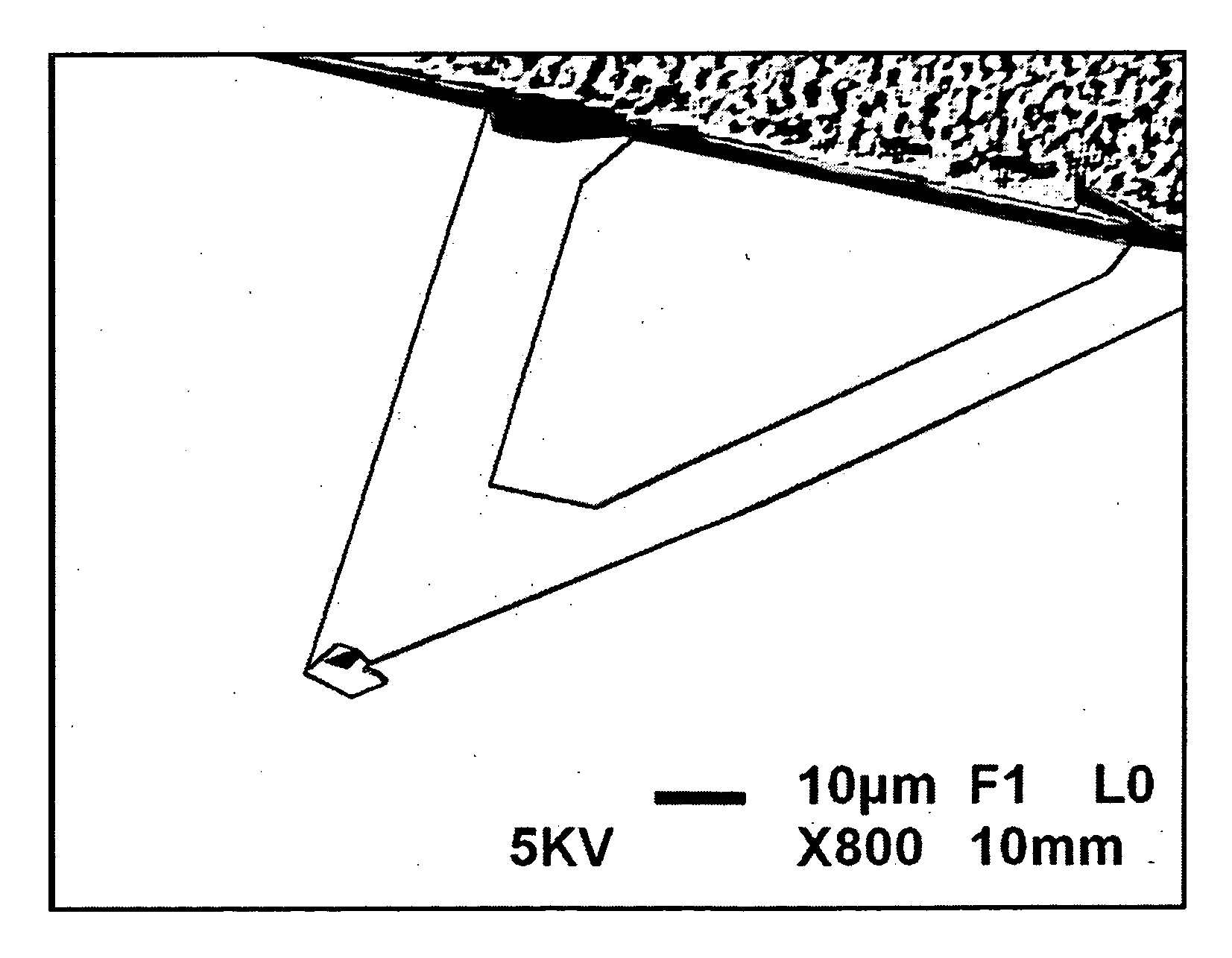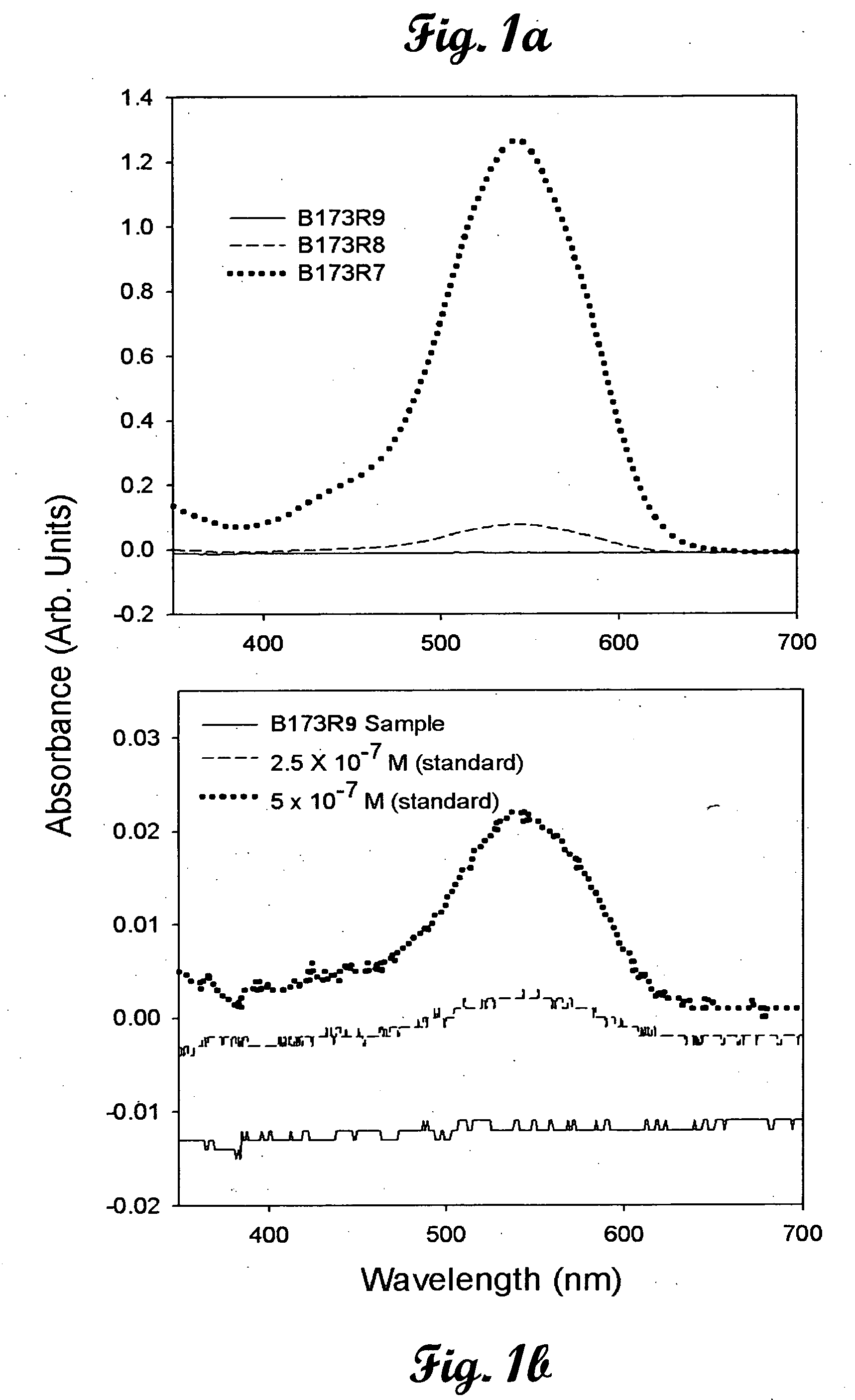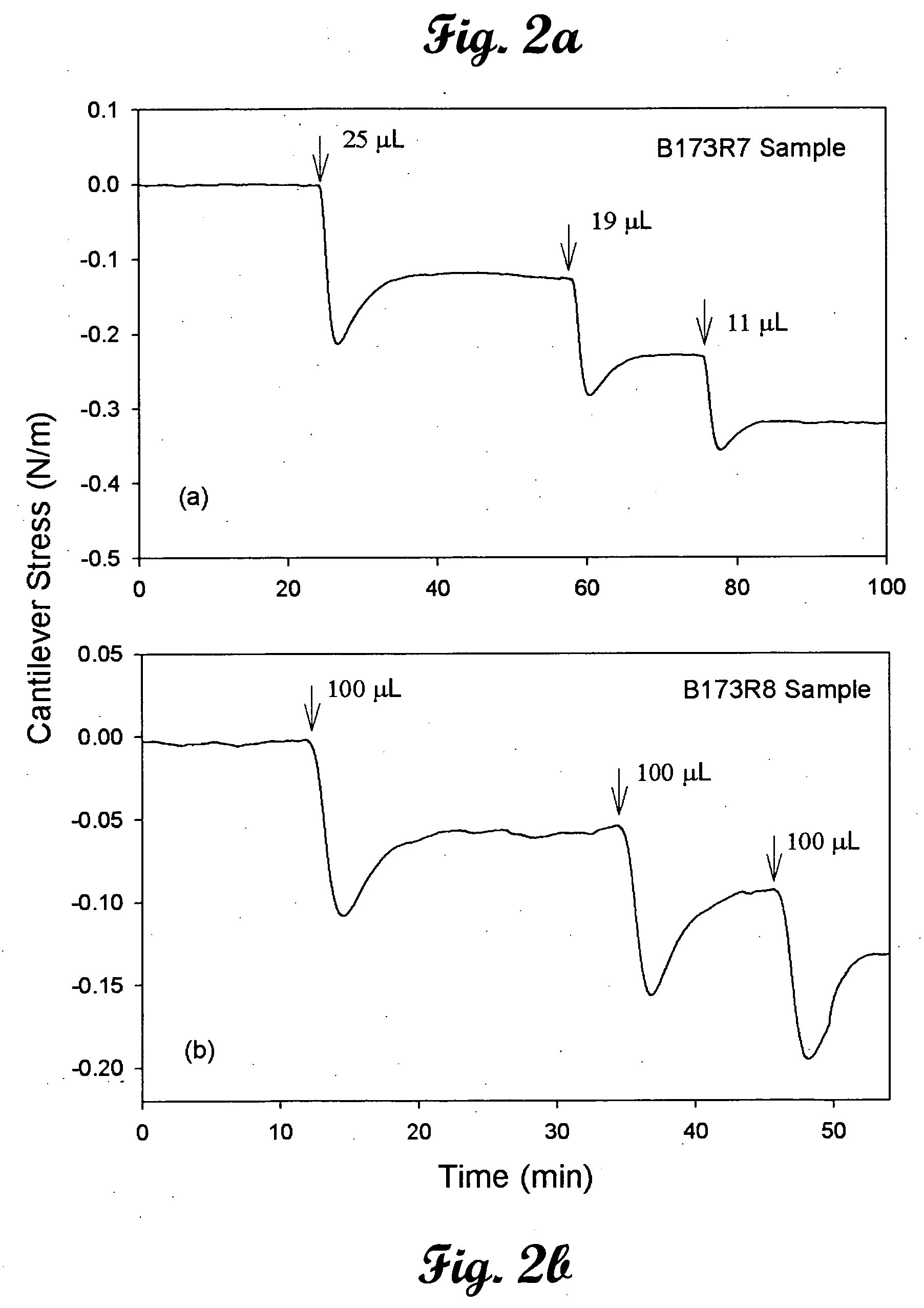Gold thiolate and photochemically functionalized microcantilevers using molecular recognition agents
a technology of molecular recognition and gold thiolate, which is applied in the direction of instruments, chemical methods analysis, specific gravity measurement, etc., can solve the problems of large surface forces, no particular chemical selectivity, and extremely sensitive microcantilever-based sensors
- Summary
- Abstract
- Description
- Claims
- Application Information
AI Technical Summary
Benefits of technology
Problems solved by technology
Method used
Image
Examples
Embodiment Construction
[0021] Chromate cantilever sensors using two different types of chromate-specific surface functionalities bound to gold-coated cantilever surfaces as thiol-based pyridine and thiol-based quaternary ammonium terminated self-assembled monolayers (SAMs) are described. The 4-mercaptopyridine based microcantilever chromate sensor has exceptional stability and very high selectivity and can be used for months in acidic media utilizing a single cantilever. The 12-mercaptododecyltriethylammonium bromide based chromate sensor, despite its superior initial sensitivity to chromate, appeared to be unstable and lost its activity within 1 week. Ethanol solutions of the quaternary ammonium terminated thiol (˜1 mM) from the self-assembly process were studied 2 weeks after the cantilever treatment and indicated significant degradation of the quaternary ammonium thiol. Some decomposition was also detected in the solid compound, which was stored in a closed container for a similar time period. We hypot...
PUM
| Property | Measurement | Unit |
|---|---|---|
| surface areas | aaaaa | aaaaa |
| concentrations | aaaaa | aaaaa |
| pressure | aaaaa | aaaaa |
Abstract
Description
Claims
Application Information
 Login to View More
Login to View More - Generate Ideas
- Intellectual Property
- Life Sciences
- Materials
- Tech Scout
- Unparalleled Data Quality
- Higher Quality Content
- 60% Fewer Hallucinations
Browse by: Latest US Patents, China's latest patents, Technical Efficacy Thesaurus, Application Domain, Technology Topic, Popular Technical Reports.
© 2025 PatSnap. All rights reserved.Legal|Privacy policy|Modern Slavery Act Transparency Statement|Sitemap|About US| Contact US: help@patsnap.com



